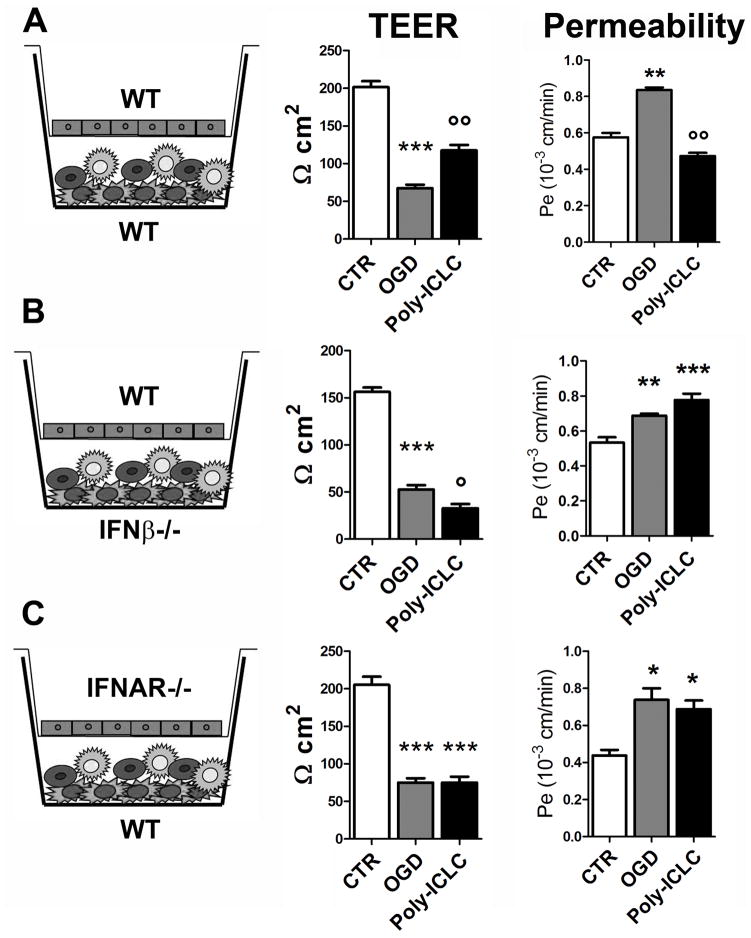Figure 4.
Poly-ICLC (carboxymethylcellulose, polyinosinic-polycytidylic acid, and poly-L-lysine double-stranded RNA) preconditioning effect in the in vitro blood-brain barrier (BBB) model. (A–C) Poly-ICLC preconditioning prevented the reduction of trans-endothelial electrical resistance (TEER) and the increase of permeability induced by oxygen-glucose deprivation (OGD) when wild type (WT) cells were used in the co-culture system (A), while it was not effective when interferon-β (IFNβ)−/− glial cells (B), or type I interferon receptor-deficient (IFNAR−/−) endothelial cells were used in the co-culture (C). Data are reported as mean ± SE. *p < 0.05, **p < 0.01, ***p < 0.001 vs. control (CTR); °p < 0.05, °°p < 0.01 vs. OGD. Adapted from (59).

